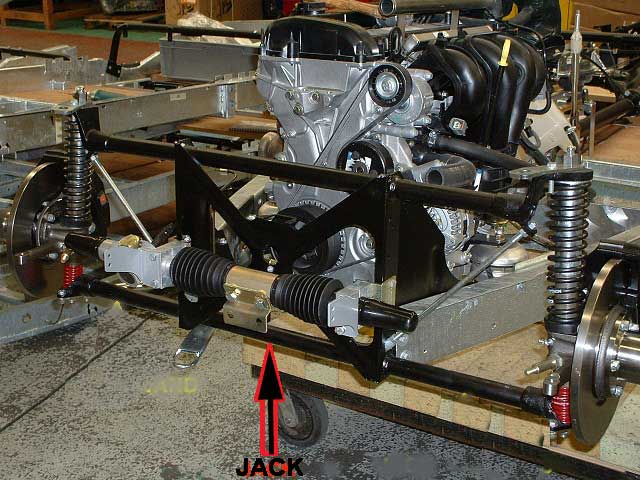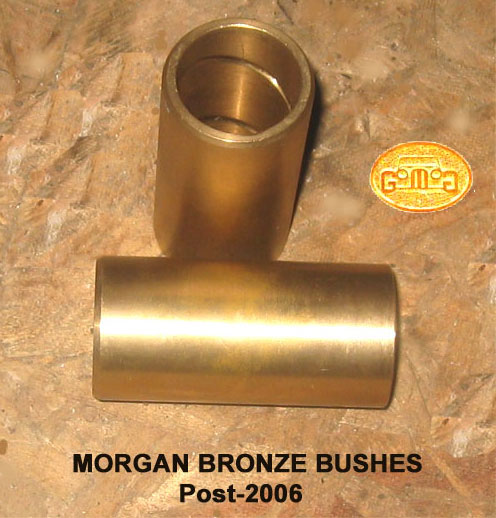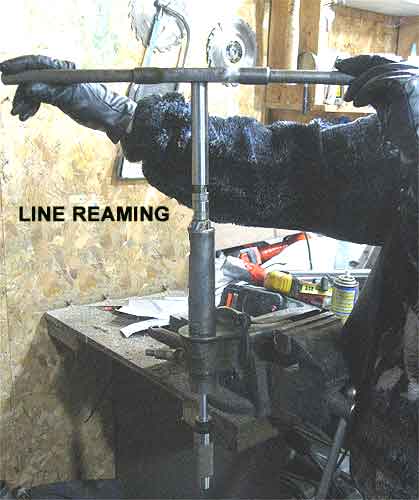
WATCHPOINT: Testing
for a seized front end is also easy. Place a jack in the front below
the middle of the crosshead. Raise the jack until it makes contact
with the bar. Now smoothly jack up watching the right stub axle.
The springs should compress smoothly, without any hesitation
before wheel rises at all. Lower the car and do the same procedure
again watching the left stub axle. I suggest this test regularly.
When you receive a new car, a rebuilt car, after long storage and every
time you grease the car. Morgans can also have their front ends seize
with accumulated grit , a hard knock and/or rust, aside from sloppy installlation
workmanship.
If these symptoms appear with a new car or one that has a
newly rebuilt front, you must remove the front axles and increase the
bush/kingpin clearance to .004-005". The deceiving element about these cars is that if you jack them and remove
the weight from the front stub axles, they will most often seem perfect
with no detectable problem in steering or up-and-down movement! The reason for this is simple.
You have removed the effect of the weight and the chassis flex.

